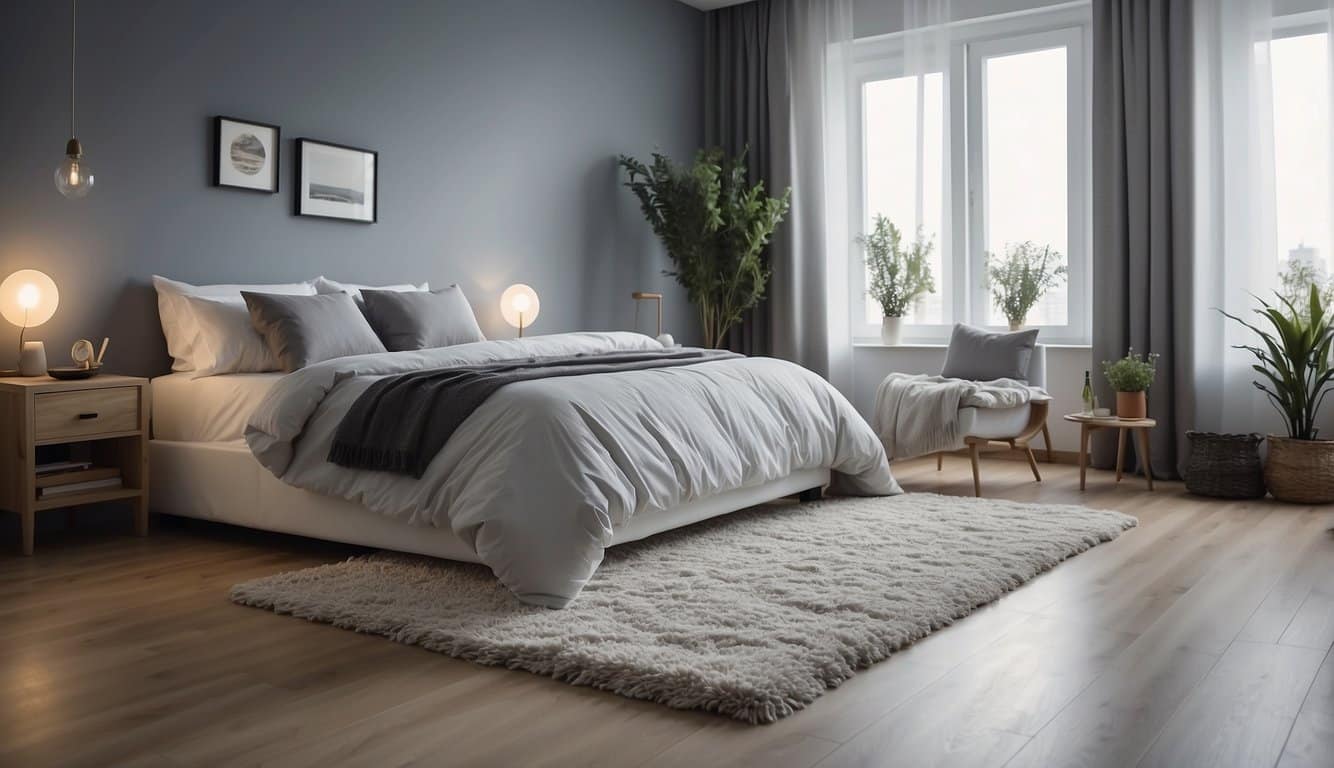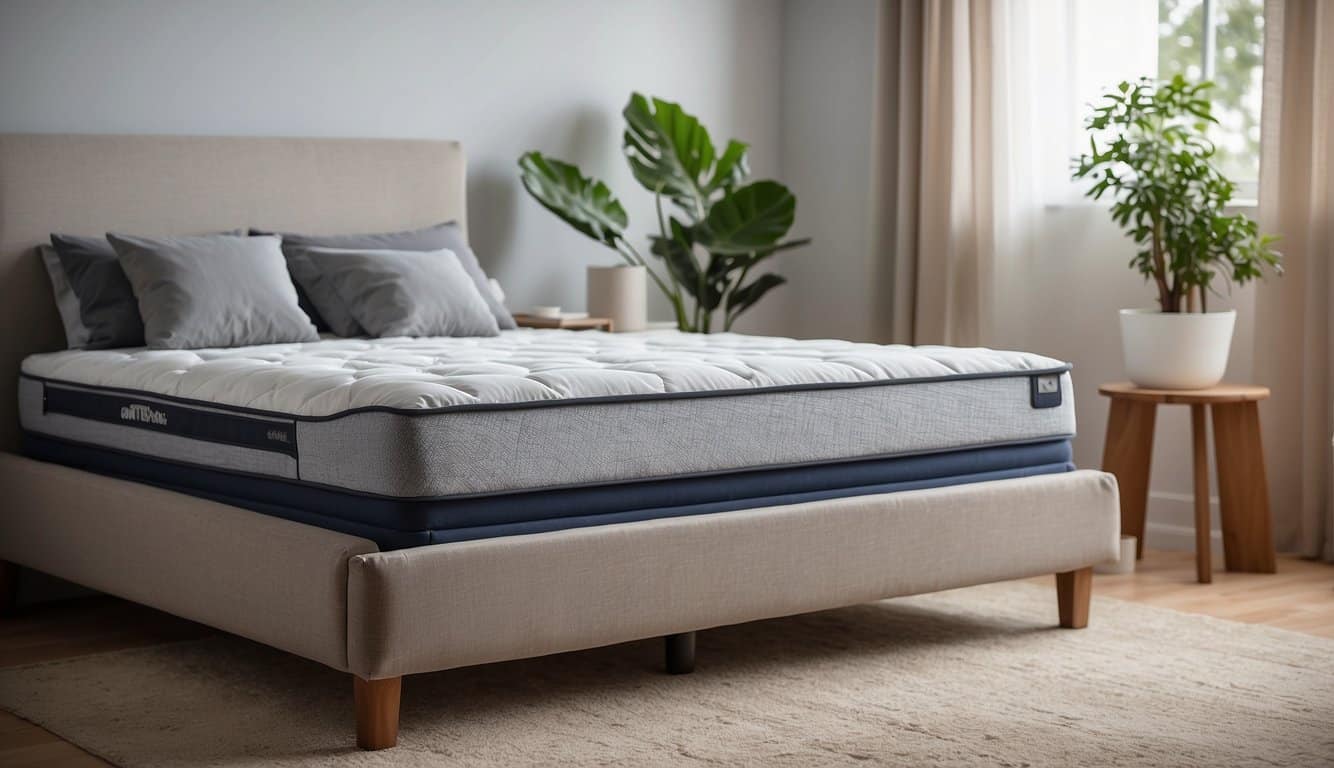An Actionable Step By Step Plan for Getting Rid of Dust Mites
Step 1: Confirm Presence of Dust Mites
- Question: Are you experiencing increased allergy symptoms such as sneezing, runny nose, or itchy eyes while indoors?
- Yes: Proceed to Step 2.
- No: Maintain regular cleaning practices.
Step 2: Reduce Humidity
- Action: Lower the humidity in your home.
- Tools: Use dehumidifiers or air conditioners to keep humidity levels below 50%, as dust mites thrive in higher humidity.
Step 3: Encase Bedding
- Action: Use dust mite-proof covers.
- Application: Encase mattresses, pillows, and box springs in allergen-impermeable covers to prevent dust mites from colonizing or escaping.
Step 4: Wash Bedding Regularly
- Action: Clean bedding frequently.
- Method: Wash all bedding in hot water (at least 130°F or 54°C) weekly to kill dust mites and remove allergens.
Step 5: Remove Dust Collectors
- Question: Do you have many dust-collecting items in your home?
- Yes: Reduce or remove items like heavy drapes, upholstered furniture, and plush toys.
- No: Continue to Step 6.
Step 6: Vacuum Regularly
- Action: Use a vacuum with a HEPA filter.
- Frequency: Vacuum carpets, rugs, and upholstered furniture at least once a week to remove dust mite debris.
- Note: If you have allergies, wear a mask while vacuuming or have someone else do it.
Step 7: Steam Clean
- Action: Clean carpets and upholstery.
- Method: Use a steam cleaner to deep clean items that cannot be washed in hot water, as steam can kill dust mites effectively.
Step 8: Replace Carpets with Hard Flooring
- Question: Is replacing carpets an option?
- Yes: Consider replacing wall-to-wall carpets with hard flooring, which doesn’t trap dust as easily and is simpler to clean.
- No: Focus on maintaining cleanliness in existing carpets.
Step 9: Regular Dusting
- Action: Dust surfaces regularly.
- Tools: Use damp or treated cloths that attract dust to prevent it from becoming airborne.
Step 10: Maintain Air Quality
- Action: Use air purifiers with HEPA filters to capture dust and potential allergens in the air.
Step 11: Evaluate and Adapt
- Question: Have allergy symptoms improved?
- Yes: Continue with the current cleaning and prevention strategies.
- No: Consider consulting an allergist for additional strategies and personalized treatment.
Additional Tips
- Avoid using humidifiers in rooms where dust mites are a problem.
- Consider minimizing the use of heavy curtains and replacing them with washable curtains or blinds.
Identifying Dust Mite Infestations
Hey there! Have you ever woken up with itchy eyes and a runny nose, suspecting these pesky, invisible critters might be to blame? Spotting a dust mite infestation can be tricky since these little guys are microscopic, but there are some tell-tale signs that they’re throwing a party at your expense. Let’s ferret them out together!
First thing’s first: let’s check your bedroom, dust mites’ favorite dance floor.
- Spotting the Symptoms: If you’re consistently sneezing or rubbing your eyes, especially in the morning, you might have unwelcome bedfellows.
- Check Your Bedding: Peek inside pillowcases and under the mattress. Those tiny brown or black specks? Possible mite droppings.
- Feel for Humidity: Moist air? Dust mites are having a blast since they love high humidity. Aim for below 50% to crash their party.
Now, don’t forget the rest of your home:
- Plush Toys: Give those cuddly bears a squeeze. If you’re sneezing, they might be dust mite hideouts.
- Carpets and Rugs: Glide your hand across. Allergies acting up? Time to deep clean.
- Furniture: Cozy couches can harbor mites. Notice dust piling up? They’re probably not far behind.
Tackling Dust Mites at the Source
To wage an effective war against dust mites, it’s crucial to hit where they thrive: your cozy, dusty nooks and fabric-laden crannies.
Cleaning & Decluttering Strategies
- Vacuum with gusto: Equip yourself with a vacuum that boasts a HEPA filter and show no mercy to carpets and upholstery. Dust mites detest these high-efficiency particulate air filters because they trap them efficiently.
- Regular washing: Crank up the water heater and launder your bedding weekly in hot water, preferably at a dust mite-despising temperature of at least 130°F (54°C).
- Declutter your domain: Minimize dust collectors, such as knick-knacks and books, that give dust mites a ticket to the good life. Aim for smooth, wipeable surfaces.
- Embrace damp dusting: Ditch the feather duster and arm yourself with a damp cloth. Trap the mites instead of launching them into the air.
Choosing Anti-Dust Mite Bedding
- Invest in encasements: Look for allergen-proof covers for your mattress, pillows, and duvets. These are your fortress walls against mite invasions.
- Opt for synthetic materials: Select pillows and duvets filled with synthetic fibers. They’re not as welcoming as down or feather for mite soirees.
- Keep it fresh: Change and wash your bedding frequently. This simple act is like hitting the refresh button on your bed’s cleanliness and inhospitality to mites.
Maintaining a Dust Mite-Unfriendly Environment
To guard your home against these microscopic intruders, focus your efforts on modifying your space to be less hospitable for dust mites. Let’s dive into specifics that will create an environment where dust mites cannot thrive.
Humidity & Temperature Control
- Keep Humidity Low: Dust mites flourish in high humidity. Strive to maintain indoor humidity below 50% with the help of a dehumidifier or air conditioner.
Season Ideal Humidity Level Summer 40-50% Winter 30-40% - Optimal Temperature: A cool temperature ranging between 68 to 72 degrees Fahrenheit (20 to 22 degrees Celsius) can help to deter dust mite infestations.Pro Tip: Use a hygrometer to monitor humidity levels in your home.
Regular Cleaning Routine
- Weekly Bedding Wash: Strip your bed of all linens weekly and wash them in hot water. Temperatures above 130°F (54°C) are lethal to dust mites. You can find more on this technique here.
- Vacuum with a HEPA Filter: Vacuum carpets, rugs, and upholstery regularly using a vacuum equipped with a high-efficiency particulate air (HEPA) filter.
- Dusting Done Right: Use damp cloths to wipe down hard surfaces, as dry dusting can launch mites into the air.
- Start from top surfaces and work your way down.
- Microfiber cloths are great for trapping allergens.
- Declutter Your Space: Fewer items on display means fewer places for dust mites to hide. Aim for a minimalist approach where possible.
Using Dust Mite-Proof Home Items
When you wage war against those pesky dust mites, integrating dust mite-proof home items is like having the ultimate shield and sword; they’re your best defense and a powerful weapon. Here’s how you can make your home a fortress against mites.
HEPA Filters for Air Purification
- What They Do: High-Efficiency Particulate Air (HEPA) filters are your go-to for trapping dust mite particles that are afloat in your home. By capturing particles as small as 0.3 microns, they help ensure that you’re breathing fresher, mite-free air.
- How to Use:
- Place HEPA air purifiers in rooms where you spend the most time, like your bedroom and living area.
- Regular maintenance is key—replace HEPA filters according to the manufacturer’s schedule to keep them at peak performance.
Pro Tip: Opt for air purifiers with a seal of approval from reputable organizations like the Asthma and Allergy Foundation of America to ensure efficacy against dust mites.
Protective Covers for Furniture
- Barrier for Bugs: Investing in allergen-proof mattress, pillow, and furniture covers is like building a no-entry zone for dust mites. These covers are designed with tightly woven fabrics that prevent mites from colonizing your comfy spots.
- Steps for Protection:
- Encase your mattress, box spring, and pillows with zippered dust mite-proof covers.
- Make sure to wash these covers regularly in hot water, as recommended by specialists, to kill any mites that might have gathered on the surface.
Natural Remedies & Solutions
Dust mites can be quite the nuisance in your home, but with some natural strategies, you can say goodbye to these pesky little critters. Check out these fun, no-nonsense tips to tackle dust mites head-on:
- Freeze Them Out: Unwashable items like plush toys can take a chilly adventure into your freezer. A 24-hour freeze fest can bid farewell to dust mites.
- Place toy in a sealed plastic bag.
- Toss the bag in the freezer for a full day.
- Thaw out, and you’re free of mites!
- Tea Tree Oil Tactics: Known for its mighty mite-fighting properties, tea tree oil does wonders:
- Mix a few drops in water to make a spray.
- Aim and spritz on affected areas.
- Let dry, and enjoy the mite-free freshness.
Explore the use of tea tree oil for an anti-mite march.
- Diatomaceous Earth (DE) Dust-Up: Grab some food-grade DE and declare war on dust mites.
- Sprinkle a thin layer of DE on areas you suspect mites are throwing a party.
- Leave the powder to settle for a few days.
- Vacuum it up. Dust mites? History!
- Wash With Wisdom: Crank up the heat in your washer to show mites the exit door.
- Hot water cycle for beddings and linens.
- Do it weekly, or even more if you’re up for it.
- Protective Pillow & Mattress Guards: Seal your sleeping quarters from mite invasions with allergen-proof covers.
- Zip them up around mattresses and pillows.
- Keep mites out, and your sleep peaceful.
Frequently Asked Questions
In this section, tackle dust mites head-on with natural solutions, thorough cleaning tips, and ways to distinguish allergy symptoms.
What are the best natural methods to combat dust mites in the home?
Combat dust mites by leveraging natural methods like:
- Lowering humidity levels below 50% to make your home less inviting for mites.
- Cleaning with essential oils like eucalyptus or tea tree oil that are known to repel these pests.
Can you detail the steps for eliminating dust mites from bedding?
To eliminate dust mites from your bedding:
- Wash bedding weekly in hot water above 130°F (55°C).
- Use allergen-proof covers for mattresses and pillows to create a barrier.
What strategies work best for reducing dust mite populations in carpets?
Reduce dust mite populations in carpets by:
- Vacuuming regularly using a HEPA filter vacuum.
- Steam cleaning carpets to kill mites with heat without chemicals.
How can I recognize dust mite allergy symptoms?
Recognize dust mite allergy symptoms which often includes:
- Sneezing, runny nose, and nasal congestion.
- Asthmatic symptoms, such as trouble breathing and wheezing.
Which effective techniques can rapidly exterminate dust mites?
Effective techniques to quickly exterminate dust mites are:
- Exposing items to direct sunlight or a hot dryer cycle.
- Spraying mite-specific acaricides suitable for home use.
Is it true that dust mites can vanish without intervention, or do they require active removal?
Dust mites typically do not vanish on their own and require active removal.
Continual cleaning efforts and reducing the potential for dust accumulation are necessary to keep mite levels low.
By following these targeted steps, you can significantly reduce the presence of dust mites in your home, making your space more comfortable and allergy-friendly.
Last update on 2025-06-06 / Affiliate links / Images from Amazon Product Advertising API





